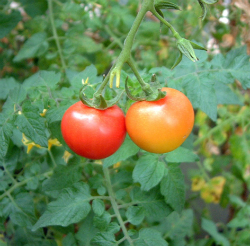Maximising carotenoid production in crops
Carotenoids are a group of pigments that help plants collect light for photosynthesis, and they act as a sunscreen to protect plants. Animals also need carotenoids as a source of vitamin A and for protection against a range of chronic diseases including cancer and cardiovascular disease. Since most animals cannot produce carotenoids themselves, they need to obtain them from plants in their diet. The EU-funded CAROTENACTORS (Dissecting carotenoid-related protein interaction dynamics for tailoring healthier crops) project aimed to better understand how plants regulate the manufacture of these pigments with a view to producing carotenoid-rich crops. Plants manufacture carotenoids via a complicated biochemical pathway involving numerous genes and enzymes. To avoid producing too much or too little carotenoids, this pathway is tightly regulated, but researchers are still not sure precisely how. CAROTENACTORS decided to use tomato as a model to uncover which mechanisms regulate carotenoid production during tomato fruit ripening. Tomatoes turn from green to red during ripening due to reduced levels of green chlorophyll pigments and increased levels of orange/red carotenoids. By monitoring biochemical changes during the different stages of tomato ripening, researchers could pinpoint specific mechanisms regulating the transition from high chlorophyll to high carotenoid production. In the process they uncovered that fruits appear to reuse an ancient interplant communication system in a new way that allows them to finely tune the production of carotenoids during ripening. In this system, the major photosynthetic pigment, chlorophyll, prevents undue production of carotenoids in unripe fruit by filtering sunlight and in effect 'shading' the fruit. As chlorophyll breaks down during ripening, it lets through light with a distinct spectral composition, which in turn activates light signalling components that eventually modulate carotenoid production. The light does this by promoting the degradation of transcription factors that repress expression of the gene encoding an enzyme largely responsible for carotenoid production. With the gene no longer repressed, carotenoid production is boosted, turning the fruit red. The knowledge generated during this project could enable scientists to manipulate carotenoid levels in plants, particularly crops, to benefit human health.







